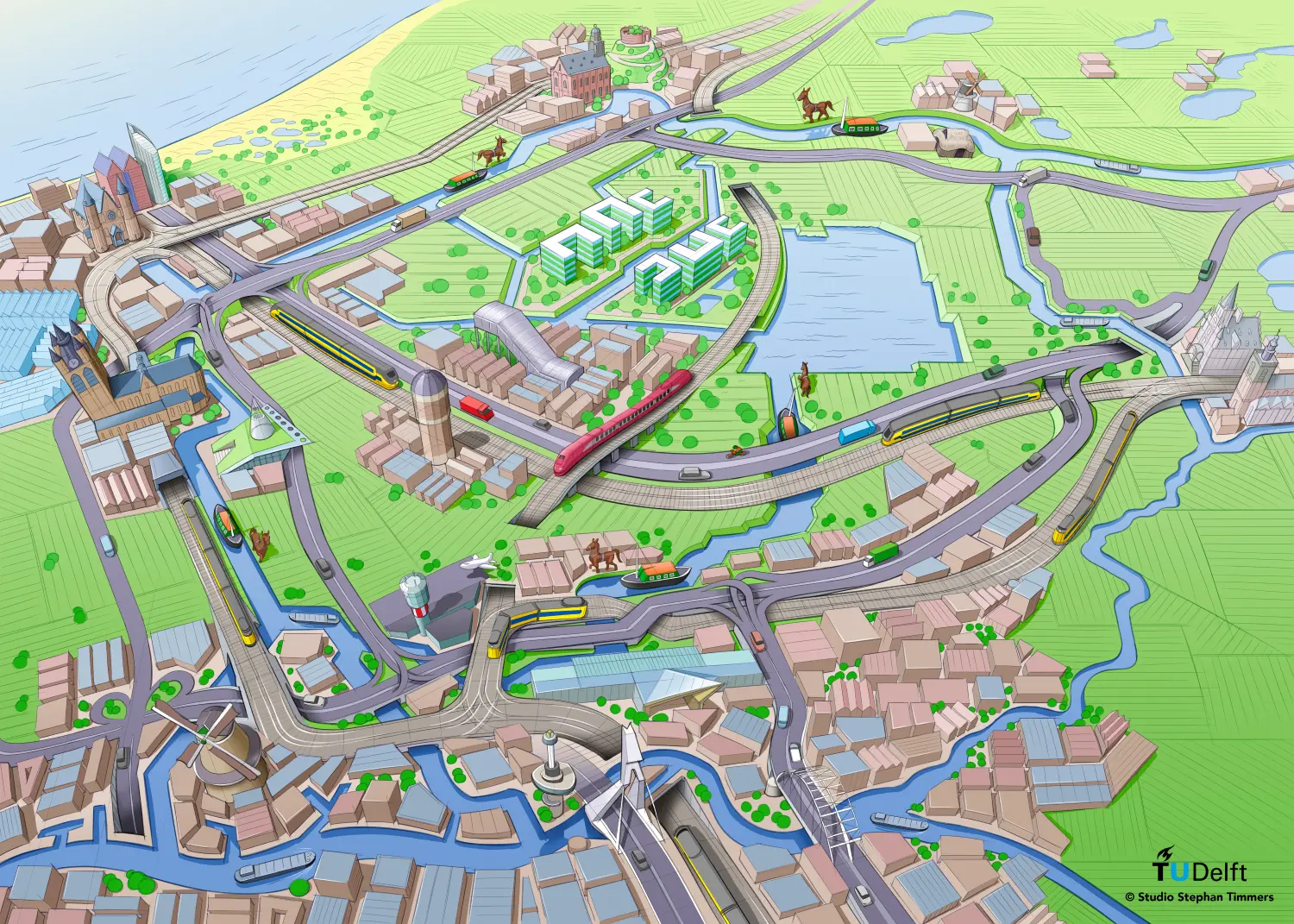Old times revived for climate adaptation
Extreme rainfall events are becoming more extreme and periods of drought are becoming more frequent. To keep the Dutch delta liveable, adaptations will be needed, such as extra water buffers. The Netherlands has a long history of struggle against water, but also makes eager use of it. What can we learn from our heritage? Erik Mostert, lecturer and researcher Water Management at TU Delft, developed several strategies for the province of South Holland to be more resilient to climate change. Inspiration for this came from Dutch heritage: tow barge canals.
The new Bentmeer, a 13 square kilometre lake east of Zoetermeer, stores extra water in winter as a buffer for the dry summers. Water sports and nature find their way together. New waterways connect the lake with the Oude Rijn and the Rotte rivers. Along these waterways, horses pull barges and people learn about Dutch history. In addition, pleasant green apartment buildings rise in the water-rich surroundings. This is one of the future scenarios for the province to develop the area between Rotterdam, The Hague and Gouda and adapt to climate change.
Century-old canals
With financial support from the province of South Holland, Erik Mostert investigated the future value of tow barge canals. In the Middle Ages, large drainage canals were dug to keep the old peatlands dry. In the 17th century, towpaths were constructed along many of these canals to allow public transport by tow barge. Examples of such tow barge canals in the province of South Holland are the Vliet, Schie, Gouwe and Oude Rijn.
Together with graduation students Esmee Kuit and Coen Kramer, Mostert explored various scenarios to deal with climate change in South Holland. The old canals play an important role in these. During droughts, they help distribute the water from the proposed new Bentmeer and in wet periods they can drain the excess water towards the sea.
Impression of the study area with the proposed Bent lake and the restored Hoogeveense canal. Rotterdam is in the south, Leiden in the north, The Hague and Delft in the west, Gouda in the east and Zoetermeer in the centre.
The Benthuizer Noordpolder
As part of this research, the Benthuizer Noordpolder was redesigned. "We have demonstrated how much additional water storage is needed to deal with climate change, and how this can be combined with housing, recreation and nature." The proposed Bentmeer should store 26.5 million m3 of water to serve as an additional source of fresh water during droughts. This results in a lake of 13.3 km2, more than 13 times larger than the Kralingse Plas in Rotterdam. The polder near Benthuizen is a suitable location for this: it is a deep polder with few buildings.
To prevent flooding due to climate change, more local water storage in the different polders is proposed. The capacity of the existing pumping stations of the different polders is simply not enough to pump away all the extra water in short time.
The climate barge
The new waterways needed to exchange water to and from the Bentmeer provide opportunities to tell the history of the landscape. Mostert already envisages how the 'Climate Barge' will soon be towed over these waterways: "The climate barge will have a museum function. At the same time, it can be a location for future discussions, to engage in conversation about climate change and how we can deal with it."
This research is part of the project 'Erfgoed onthult. Trekvaarten binnen het waterverband.' and was made possible thanks to a contribution from the ‘Erfgoedlijn Trekvaarten’ of the Province of Zuid-Holland.
Read the translation of final report 'The climate barge; Heritage and climate adaptation in the Dutch province of South-Holland'. Written by Erik Mostert, with input from Esmee Kuit, Coen Kramer, Fransje Hooimeijer, Olivier Hoes, Jan Peter Hofman and Max Hofman.
Or go to the original Dutch report ‘De klimaatschut: trekvaarten, klimaatadaptatie en ruimtelijke ontwikkeling in Zuid-Holland.’

